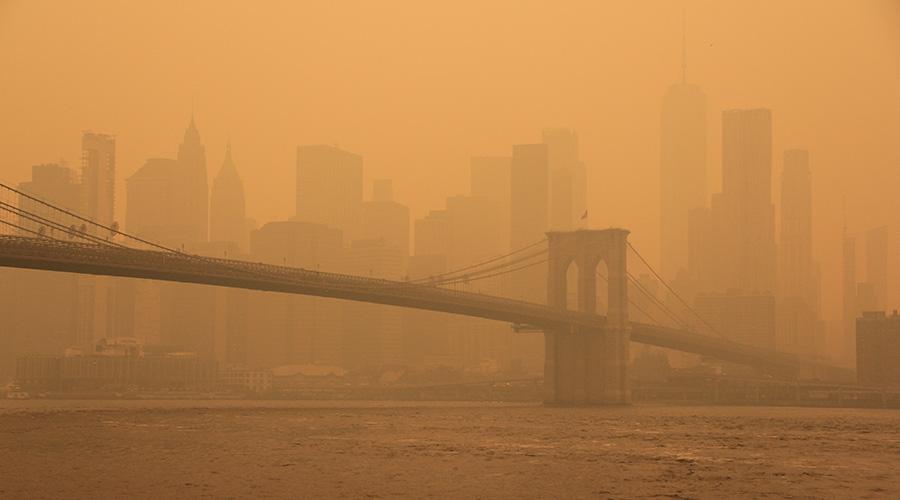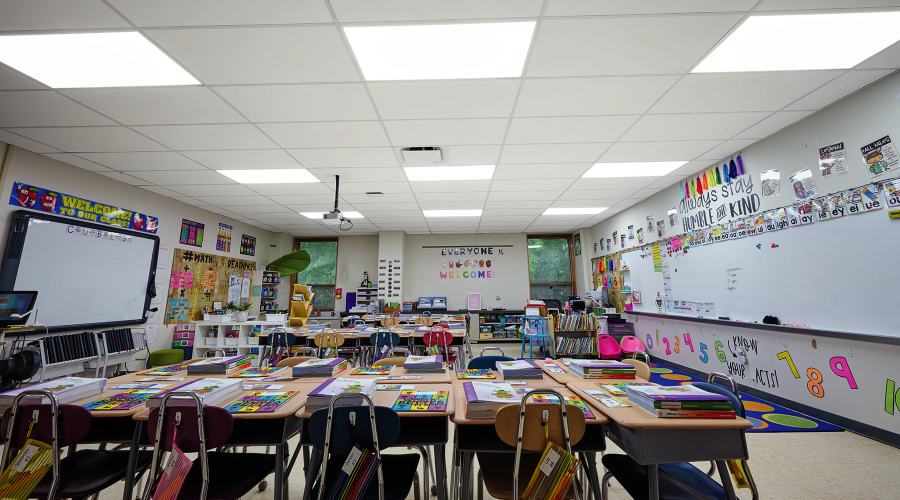Do You Have Too Much Carbon Dioxide In Your Facility?
Is your building making your occupants sleepy? Dumber? Two scientists developed an online calculator to determine if your CO₂ concentration might be too high.
By Kenneth Alambra and Dominik Czernia
The emission of carbon dioxide (CO₂) as a result of human activity is a well-known threat to our planet and is often considered one of the main contributors to the greenhouse effect. But what happens when you and your building occupants breathe in carbon dioxide? Is carbon dioxide dangerous to an individual person? Yes, exposure to high CO₂ concentrations may cause drowsiness, increased heart rate, blood pressure, unconsciousness, and even life-threatening complications. Scientists have also shown that carbon dioxide can make you dumber! Although the carbon dioxide level in outside air is still relatively low, the problem arises in closed space where people constantly exhale CO₂ as a natural part of breathing.
To identify a too-high carbon dioxide level in an enclosed space, we created a CO₂ breathing emission calculator, which estimates how much the CO₂ concentration can increase in a room before there might be a problem. Is it at an acceptable level, or does it require additional ventilation?
But first, let’s look at some of the issues regarding why a carbon dioxide calculator might be necessary.
In 2020, the major constituents of dry air (by volume) were nitrogen (78 percent) and oxygen (21 percent). The remaining 1 percent consists of argon (0.9 percent), carbon dioxide (0.04 percent), and other gases (0.06 percent). You inhale this mixture of air all the time. The relative CO₂ level is extremely low compared to the other air components. Using the unit of parts per million (PPM), we can say that the CO₂ concentration equals 400 PPM.
Exhaled air is a mixture of around 3,500 compounds, including nitrogen (78 percent), oxygen (16 percent), argon (0.9 percent), carbon dioxide (4 percent). The rest of the components are present in microscopic amounts. So, do humans breathe out carbon dioxide? Yes, we use 5 percent of oxygen we breathe in to increase the CO₂ concentration by nearly 4 percent points, i.e., 40,000 PPM. That's a hundredfold increase!
The adult human lung capacity is usually three to five liters, but we usually inhale only about 0.35 liters of air during one breathing cycle. Of course, this is next to nothing compared to the average room volume of approximately 50,000 liters, but that's only one breathing cycle. In reality, an average adult breathes around 12 - 20 times a minute at rest, which is what might actually change the room's air composition.
What happens when you breathe in carbon dioxide? Is carbon dioxide dangerous?
Although CO₂ gas is generally non-toxic for humans, it can be dangerous in excessive amounts for two reasons:
Chemical — CO₂ dissolves in the body's water, enters the bloodstream, forms carbonic acid, and eventually makes the blood acidic. That lowers the blood pH, and too low blood pH is dangerous for health. Interestingly, too low CO₂ concentration results in elevated blood pH, which causes alkalosis, which is also a dangerous state.
Mechanical — CO₂ acts as an asphyxiant, a gas that displaces the normal oxygen in air. As a result, the oxygen content is reduced, which can lead to death by suffocation in extreme cases. What's more, CO₂ is odorless, and we might not even notice if its present in high concentrations.
If you are still in doubt about is carbon dioxide dangerous?, the US Food Safety and Inspection Service prepared a health hazard information sheet for carbon dioxide, where you can find the detailing symptoms at various CO2 exposure levels.
- 10,000 ppm (1.0 percent): Typically no effects, possible drowsiness
- 15,000 ppm (1.5 percent): Mild respiratory stimulation for some people
- 30,000 ppm (3.0 percent): Moderate respiratory stimulation, increased heart rate and blood
- pressure, ACGIH TLV-Short Term
- 40,000 ppm (4.0 percent): Immediately Dangerous to Life or Health (IDLH)
- 50,000 ppm (5.0 percent): Strong respiratory stimulation, dizziness, confusion, headache, shortness of breath
- 80,000 ppm (8.0 percent) Dimmed sight, sweating, tremor, unconsciousness, and possible death
How to use the CO₂ breathing emission calculator?
The CO₂ breathing emission calculator can estimate the CO₂ emission in your room depending on a few inputs. Here is a short instruction on how to use this tool:
- Select the room type from the wide range of available options. Alternatively, select the custom option and input the ACH value (air changes per hour), which is the number of times the room's ventilation system replaces the air volume in the room in an hour.
- Decide whether this room was previously empty or occupied. It is crucial for estimating the initial CO₂ concentration level.
- Specify how many people are in the room, what they do (sleeping, resting, or working), and for how long. We know that people produce CO₂ and it turns out the production rate depends on the activity level.
- Fill in your room dimensions or volume. You can also directly input the room's floor area if you know it.
- As a result, you will obtain the CO₂ concentration level expressed in percentages and parts per million (PPM) for the room.
Additionally, the tool will tell you whether this concentration is safe for occupants or not. If the level of CO₂ becomes too high, the tool explains what happens when occupants breathe in that concentration of carbon dioxide and what they can do to reduce the CO₂ concentration.
How to reduce CO₂ concentration indoors?
After learning how to estimate the CO₂ level generated by humans, the next question is how to reduce it indoors. There are several ways:
- Install and maintain a ventilation system that will bring in fresh outdoor air. The CO₂ particles will dilute in this air keeping a low CO₂ concentration.
- If you don't want to invest in expensive systems, you can ventilate the facility manually by opening a window. Do it for 10 to 15 minutes, and the CO₂ levels will be drastically lower.
- Studies have shown the highest CO₂ readings were found in crowded areas. If an office has many occupants, their collective exhalations might make the CO₂ levels skyrocket. Try to avoid such situations or let some fresh air inside by opening windows or doors.
Reducing CO₂ levels might offer many benefits including boosting mental health, productivity, sleep quality, immune response and a reduction in headaches and stress. So, if you ever feel sluggish or tired, that might be an indicator of a too high CO₂ level. Try to breathe with some fresh air - it should help in most cases.
Kenneth Alambra is a civil engineer with a passion for innovation. Dominik Czernia a PhD student in physics. Use the calculator tool they created for free here.
Related Topics:












